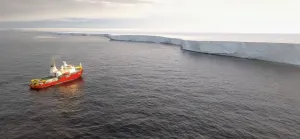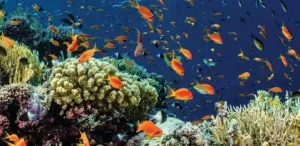(Press-News.org) OAK BROOK, Ill. - A machine learning algorithm helps accurately differentiate benign and premalignant colorectal polyps on CT colonography scans, according to a study published in the journal Radiology.
Colorectal cancer is among the three most common causes of cancer-related death among men and women in industrialized countries. Most types of colorectal cancer originate from adenomatous polyps--gland-like growths on the mucous membrane lining the large intestine--that develop over several years. Early detection and removal of these precancerous polyps can reduce the incidence and mortality of colorectal cancer.
During the last two decades, CT colonography emerged as a noninvasive alternative to colonoscopy in screening for colorectal cancer. It is comparable to colonoscopy in detecting most polyps and is effective at visualizing portions of the colon that in cases of complex anatomical conditions cannot always be evaluated by colonoscopy. However, CT colonography does not enable a definite differentiation between benign and premalignant polyps, which is crucial for individual risk stratification and therapy guidance.
For the new study, researchers leveraged the power of radiomics, a process of extracting quantitative features from medical images, to characterize polyps beyond what was apparent to the naked eye.
The researchers developed a machine learning algorithm to predict the character of the individual polyps based on quantitative image features extracted through radiomics. They applied the noninvasive, radiomics-based machine learning method on CT colonography images from a group of asymptomatic patients at average risk of colorectal cancer. The machine learning algorithm was trained on a set of more than 100 colorectal polyps in 63 patients and then tested on a set of 77 polyps in 59 patients.
In the test set, the machine learning approach enabled noninvasive differentiation of benign and premalignant CT colonography-detected colorectal polyps, with a sensitivity of 82%, and specificity of 85%. The area under the curve (AUC), a graphical measurement that reflects how much the model is capable of distinguishing between benign and precancerous polyps, was excellent.
"These results serve as proof-of-concept that machine learning-based image analysis allows the noninvasive differentiation of benign and premalignant colorectal polyps in CT colonography data sets," said study lead author Sergio Grosu, M.D., radiologist from University Hospital, Ludwig Maximilian University of Munich, in Munich, Germany. "The AUC of 0.91 indicates that this method works well."
The findings point to a role for machine learning-derived algorithms in boosting the effectiveness of CT colonography as a screening tool for colorectal cancer.
"Adding machine learning-assisted image analysis to conventional, radiological image reading could further improve the clinical significance of CT colonography-based colorectal cancer screening by allowing for a more precise selection of patients eligible for subsequent polypectomy," Dr. Grosu said. "This method could be used routinely as a second reader in all CT colonography examinations in the distant future."
Dr. Grosu said that additional studies with larger numbers of patients are needed to validate the findings. He added that these studies should also help drive improvements in the machine learning algorithm.
"Further refinement of the machine learning-based image analysis is necessary to achieve higher precision in polyp differentiation as well as workflow optimization for better applicability in clinical routine," Dr. Grosu said.
INFORMATION:
"Machine Learning-based Differentiation of Benign and Premalignant Colorectal Polyps Detected with CT Colonography in an Asymptomatic Screening Population - A Proof-of-Concept Study." Collaborating with Dr. Grosu were Philipp Wesp, M.Sc., Anno Graser, M.D., Stefan Maurus, M.D., Christian Schulz, M.D., Thomas Knösel, M.D., Clemens C. Cyran, M.D., Jens Ricke, M.D., Michael Ingrisch, Ph.D., and Philipp M. Kazmierczak, M.D.
Radiology is edited by David A. Bluemke, M.D., Ph.D., University of Wisconsin School of Medicine and Public Health, Madison, Wisconsin, and owned and published by the Radiological Society of North America, Inc. (https://pubs.rsna.org/journal/radiology)
RSNA is an association of radiologists, radiation oncologists, medical physicists and related scientists promoting excellence in patient care and health care delivery through education, research and technologic innovation. The Society is based in Oak Brook, Illinois. (RSNA.org)
For patient-friendly information on CT colonography, visit RadiologyInfo.org.
Peer review/observational study/people
In patients with severe COVID-19, the innate immune system overreacts. This overreaction may underlie the formation of blood clots (thrombi) and deterioration in oxygen saturation that affect the patients. This is shown in an Uppsala University study published in the journal Frontiers in Immunology.
Blood contains numerous proteins that constitute the body's primary barrier, by both recognising and destroying microorganisms, including SARS-CoV-2 (the virus that causes COVID-19). These proteins are part of the intravascular innate immune system (IIIS), which consists of certain white blood cells, platelets and what are known as the cascade systems of the blood.
Only 5 ...
Glaciers in West Antarctica are moving more quickly from land into the ocean, contributing to rising global sea levels. A 25-year record of satellite observations has been used to show widespread increases in ice speed across the Getz sector for the first time, with some ice accelerating into the ocean by nearly 50%.
The new study, led by the University of Leeds, reports that 14 glaciers in the Getz region are thinning and flowing more quickly into the ocean. Between 1994 and 2018, 315 gigatonnes of ice has been lost, adding 0.9 mm to global mean sea level - equivalent to 126 million Olympic swimming pools of water.
The results published today (19/02/2021) in the journal Nature Communications show that, on average, ...
A radiotherapy technique which 'paints' tumours by targeting them precisely, and avoiding healthy tissue, has been devised in research led by the University of Strathclyde.
Researchers used a magnetic lens to focus a Very High Electron Energy (VHEE) beam to a zone of a few millimetres. Concentrating the radiation into a small volume of high dose will enable it to be rapidly scanned across a tumour, while controlling its intensity.
It is being proposed as an alternative to other forms of radiotherapy, which can risk non-tumorous tissue becoming overexposed to radiation.
The researchers are planning further investigation, with the use of a purpose-built device.
The study ...
During glacial periods, the sea level falls, because vast quantities of water are stored in the massive inland glaciers. To date, however, computer models have been unable to reconcile sea-level height with the thickness of the glaciers. Using innovative new calculations, a team of climate researchers led by the Alfred Wegener Institute has now managed to explain this discrepancy. The study, which was recently published in the journal Nature Communications, could significantly advance research into our planet's climate history.
During transitions from glacials to interglacials, the glaciers on Greenland and in North America and Europe wax and wane ...
A simple but powerful idea is to improve the health of corals using cocktails of beneficial bacteria. The strategy is being explored as part of global scientific efforts to help corals become stronger, more stress resistant and more likely to survive bleaching events associated with climate change.
Corals rely on bacterial and algal symbionts to provide nutrients, energy (through photosynthesis), toxin regulation and protection against pathogenic attacks. This complex and finely balanced relationship underpins the health of the holobiont and coral reefs as a whole.
Rather like the use of probiotics in plant science to improve ...
Members of the German Bundestag who belong to underrepresented groups are more active in the legislative process and, early on, typically tend to advocate more for the interests of their groups. However, a current study by the universities in Konstanz, Basel, Geneva and Stuttgart indicates that, after a few years, most of them do move on to other political fields. This is tied to the career-related incentives these elected representatives face: At first, their careers in parliament benefit from their ability to speak for underrepresented groups. As their careers progress, however, they are required to demonstrate expertise in areas beyond the interests of these groups, the researchers conclude.
The study was led by Professor Christian Breunig, ...
Low-income families have a high awareness of healthy diets but can't afford good quality and nutritious food, new research shows.
The University of York study, in partnership with N8Agrifood, showed that participants tried to eat as much fruit and vegetables as they could within financial constraints, avoiding processed food wherever possible. But there was widespread acknowledgement that processed food was often more accessible than healthy options because of its lower cost.
The researchers said that while the diets of low-income households have been subject ...
Whether it's a "Zoombomb" filled with racial slurs, a racist meme that pops up in a Facebook timeline, or a hate-filled comment on an Instagram post, social media has the power to bring out the worst of the worst.
For college students of color who encounter online racism, the effect of racialized aggressions and assaults reaches far beyond any single social media feed and can lead to real and significant mental health impacts - even more significant than in-person experiences of racial discrimination, according to a recently published study from researchers at UConn and Boston College.
"I think we all suspected that we would find a relationship between the racism online in social media and student mental health," says lead author Adam McCready, an assistant professor-in-residence ...
A team of researchers from the Hebrew University of Jerusalem (HUJI) led by Dr. Assaf Horesh have discovered the first evidence of radio flares emitted only long after a star is destroyed by a black hole. Published in the periodical Nature Astronomy, the discovery relied upon ultra-powerful radio telescopes to study these catastrophic cosmic events in distant galaxies called Tidal Disruption Events (TDE). While researchers had known that these events cause the release of radio flares, this latest discovery saw those flares being emitted months or even years after the stellar disruption. The team was led by Dr. Horesh from the Racah Institute of Physics at the Hebrew together with the NASA Swift space telescope director Professor Brad Cenko and Dr. Iair ...
Selenium contamination of freshwater ecosystems is an ongoing environmental health problem around the world. A naturally occurring trace element, selenium levels are high in some geologic formations like sedimentary shales that form much of the bedrock in the Western United States. Soils derived from this bedrock, and weathering of shale outcrops, can contribute high levels of selenium to surrounding watersheds.
New research out today in Environmental Science & Technology from UConn Assistant Professor of Natural Resources and the Environment Jessica Brandt with Travis Schmidt and colleagues at the United States Geological Survey (USGS) investigates some of the complexities of selenium and how it moves through the ecosystem during runoff ...



